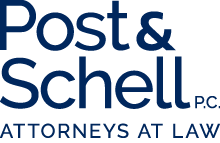

OSHA Issues Guidance to Employers on COVID-19

Worker safety has always been at the core of the Occupational Safety and Health Act (“the Act”) since its adoption in 1970. The COVID-19 pandemic presents new challenges to the Occupational Safety and Health Administration (“OSHA”) in keeping workers safe, both essential workers who continue to be in the workplace during the crisis, as well as those who will gradually return to the workplace in the coming months. In anticipation of workers returning, OSHA published Guidance on Preparing Workplaces for COVID-19 (OSHA 3990-03 2020) on April 10, 2020, and Interim Enforcement Response Plan for Coronavirus Disease 2019 on April 13, 2020, which serve to clarify to some extent the responsibilities that employers will have as the COVID-19 crisis continues to play out.
Guidance on Preparing Workplaces for COVID-19
As part of the new Guidance on Preparing Workplaces for COVID-19, OSHA has developed a pyramid to classify the occupational risk exposures for COVID-19, from very high to low risk.
- Very high-risk exposures include certain medical, postmortem, and laboratory employment situations where workers are performing aerosol-generating procedures or handling COVID-19 specimens.
- High exposure risks include other medical providers, medical transport workers, and, certain mortuary workers.
- Medium-risk jobs include those that require frequent or close contact with people who may be, but are not known to be, infected with the virus,
- Low-risk exposures include those that do not require contact with COVID-19 infected individuals or frequent close contact with others.
Under the new guidance from OSHA, employers will be required to take certain steps to protect employees from COVID-19 depending upon the level of risk exposure. All employers are encouraged to:
- Develop an infectious disease preparedness and response plan.
- Prepare to implement basic infection prevention measures in the workplace (which can include telecommunicating).
- Develop policies and procedures for prompt identification and isolation of infected employees.
- Develop and implement communications regarding workplace flexibilities and protections.
- Implement workplace controls.
The controls required under the OSHA Guidance will vary depending upon the risk of exposure. For example, engineering controls (installing high-efficiency air filters, increasing ventilation, and installing physical barriers); personal protective equipment (PPE); and certain administrative controls (encouraging sick workers to stay at home, altering work schedules, discontinuing nonessential travel, and training employees in PPE use) will only be required in higher-risk workplaces. For the lower risk category, engineering controls and PPE are not recommended, and instead, OSHA recommends that lower risk employers monitor public health communications about COVID-19 and ensure that employees have access to that information. For employers in the medium-risk category, employers should consider offering face masks or shields to ill employees and customers until they are able to leave the workplace, and should install physical barriers where feasible. They should also limit or restrict customer and public access to the workplace where appropriate, and consider ways to minimize face-to-face contact, such as telephone communication or remote work.
OSHA has also issued specific guidance for the construction and manufacturing industries (OSHA 4000 and 4002). In addition to modified work practices that OSHA is recommending for all industries (encouraging workers to stay home if sick, wearing masks, encouraging respiratory etiquette, and social distancing), OSHA is also encouraging construction employers to limit in-person meetings, wipe down tools before and after use, and clean and disinfect jobsite toilets regularly. Pennsylvania has also issued its own Guidance for Business in the Construction Industry in advance of the planned re-opening of the construction industry on May 1. For manufacturing employers, OSHA is encouraging repositioning work stations or installing barriers and discouraging the use of tools by multiple employees.
Interim Enforcement Response Plan for Coronavirus Disease 2019
The Interim Response Plan issued by OSHA in response to the pandemic limits the responsibility that employers will have to investigate and record cases of COVID-19 among employees. Employers are required under 29 CFR § 1904 to record all work-related illnesses and injuries on an OSHA 300 Log. While COVID-19 is considered to be a recordable illness, employers will only be required to record those cases that are obviously work-related, but not those that are not traceable to the employee contracting the virus in the workplace. An employer will be required to record cases on its OSHA 300 Log where there is objective evidence that the exposure was work-related, such as in situations where the illness has developed in clusters of closely situated employees. The employer will also be required to record the illness where objective evidence of exposure in the workplace is reasonably available. Examples of reasonably available evidence include information given to the employer by employees, as well as information that an employer learns regarding its employees’ health and safety in the ordinary course of managing its business and employees.
While OSHA imposes penalties on employers for failing to report injuries and illnesses, there is no penalty for having high recorded numbers on the log. However, in some industries such as construction, the OSHA 300 Log is viewed as a metric for the employer’s safety history, and therefore employers may be reluctant to record COVID-19 illnesses as workplace illnesses for fear of losing contractual opportunities.
The OSHA discretionary reporting guidelines set forth in the Interim Enforcement Response Plan do not apply to high-risk workplace situations, and expressly exclude health care, emergency response, and correctional institutions. Employers in those areas will still be required to investigate and record all COVID 19 cases among employees and record those which were acquired at work. According to a press release from OSHA, “employers of workers in the healthcare industry, emergency response organizations (e.g., emergency medical, firefighting, and law enforcement services), and correctional institutions must continue to make work-relatedness determinations pursuant to 29 CFR § 1904.”
OSHA has reasoned that the reporting requirements cannot effectively be enforced in all workplace environments. Employers “other than those in the health care industry, emergency response organizations (e.g., emergency medical, firefighting and law enforcement services) and correctional institutions” generally will not be required to record COVID-19 cases because they “may have difficulty making determinations about whether workers who contracted COVID-19 did so due to exposures at work.” OSHA has stated that the goal of the interim plan is to “provide certainty to the regulated community and help employers focus their response efforts on implementing good hygiene practices in their workplaces and otherwise mitigating COVID-19’s effects.” OSHA has sought to justify the discretionary aspects of the interim plan on the basis that “some employers may face difficulties complying with OSHA standards due to the ongoing health emergency.”
As part of the Interim Enforcement Response Plan, OSHA has also sought to clarify its role in connection with the investigation of COVID-19 cases in the workplace. Local OSHA offices will have broad discretion to determine whether to investigate COVID-19 related complaints from workers, with priority given to higher risk workplaces. OSHA has stated that its Plan “sets forth interim procedures that allow flexibility and discretion for our field offices to maximize OSHA’s impact in securing safe workplaces for workers in this evolving environment. As with responding to any complaint, an examination of the facts will guide the determination of the best enforcement approach and appropriate action to take based on the employer’s response.” Prior to any inspection related to COVID-19, each area director should evaluate the risk level of exposure to the virus at the workplace and prioritize the resources in coordination with the regional offices to determine if an on-site inspection is necessary. In many cases, instead of an investigation, worker complaints may trigger a letter from OSHA requesting that the employer investigate and respond with a description of corrective actions taken.
The new guidance and response plan issued by OSHA has not met with uniform approval, as many worker advocates believe that OSHA should be doing more to further worker safety in response to the pandemic. They are concerned that the default will be for the employer to assume that the illness was not the result of a workplace exposure, and thus not perform a comprehensive investigation to determine the source of the exposure. In turn, this could lead to continued exposures in the infected workplace that might otherwise be reduced or eliminated through a thorough investigation. There has also been criticism of the Guidance for focusing on the health care profession while seemingly offering little guidance to other industries such as grocery stores or food processing plants at which incidents of COVID-19 illnesses have been high. In addition, since OSHA does not plan to perform onsite investigations of all complaints of workplace exposures to COVID-19, the concern is that OSHA may be placing too much faith in employers to do the right thing for their employees, with little to no reprisal for employers that do not. There have been recent calls for OSHA to issue an emergency temporary standard, but OSHA appears reluctant to consider this drastic step at this time.
In addition to the guidance provided by OSHA in these latest communications, employers need to be mindful of the requirements imposed by their states. Pennsylvania, for example, issued an Order of the Secretary of the Pennsylvania Department of Health Directing Public Health Safety Measures for Businesses Permitted to Maintain In-Person Operations on April 15, 2020, which more specifically address the actions that an employer should take upon discovering that the business has been exposed to a person who is probable or confirmed for COVID-19, including closing off areas visited for a period of time, performing temperature screenings, and identifying workers who were in contact with the person. Employers should also attempt to prevent large gatherings by staggering work hours and break times, allowing for social distancing on breaks and in common areas, and conducting meetings virtually where possible. For businesses open to the public, occupancy should be limited to no more than 50 percent of the number stated on the certificate of occupancy, and customers should be required to wear masks to enter.
The OSHA Guidance and Interim Response Plan are intended to be time-limited to the current public health crisis. We suspect that this will not be the last word from OSHA regarding the COVID-19 crisis. Post & Schell will endeavor to keep its clients and partners up to date on OSHA’s response to the ongoing pandemic.
Related Industries
- Construction
- Real Estate
- Commercial Transportation
- Communications
- Death Care
- Energy and Utilities
- Banking and Financial Services
- Health Care
- Heavy/Highway & Utility Construction
- Higher Education
- Hospitality
- Insurance
- Manufacturing
- Medical Device & Life Sciences
- Municipal & Government
- Pharmaceutical
- Professional Services
- Retail


